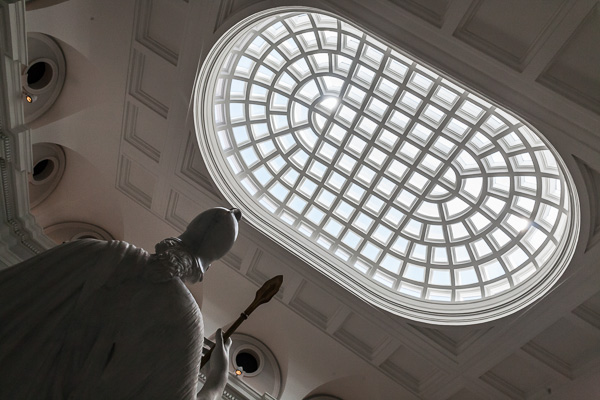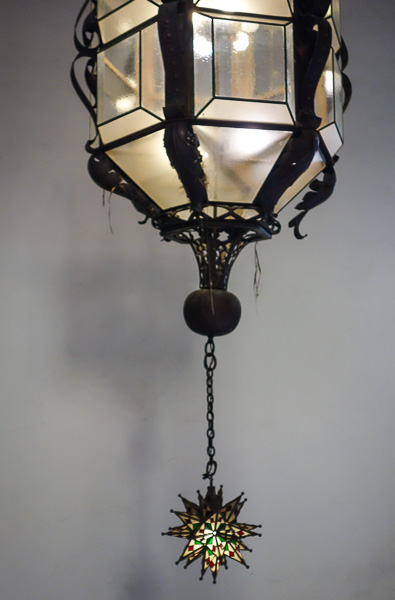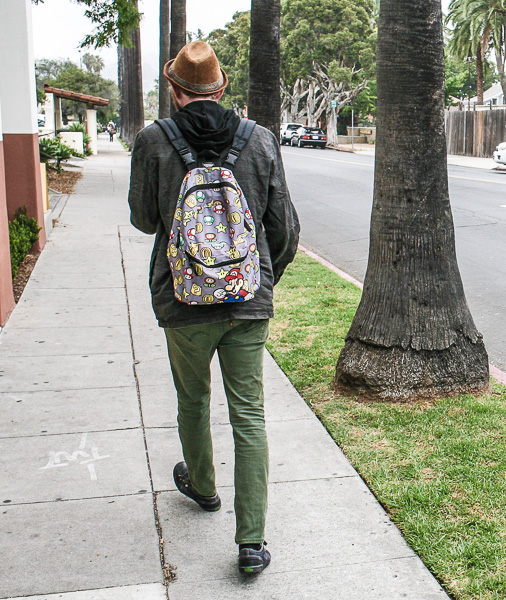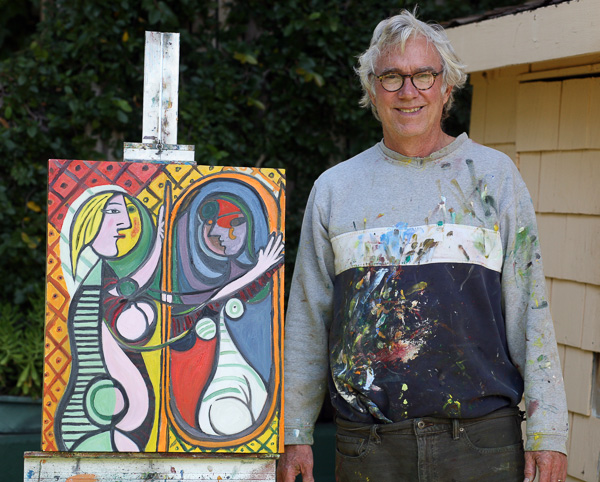I wasn’t quite satisfied with last week’s post, “Genetic Engineering With An SF Interface.”
At this point I’m into revising the fourth out of fifteen first-draft chapters of my novel The Big Aha. And I have some lingering questions about how my characters go about tweaking the “nurbs,” which are the biomodded or tweaked organisms of the future—pretty much used in place of any of the manufactured things we currently use.

There’s also some stuff called nurb gel, which is a kind of primordial slime or universal tissue that can be converted into nurbs.
And my characters have acquired something they call “qwet” for “quantum wetware.” It allows them to get their minds into a cosmic mode, which feel fairly psychedelic, and which allows for telepathy or teep with other qwet people. Nurbs can get qwet too.
I’m interested in how the coming of qwet makes a difference in how we manipulate our nurbs. I’ve organized this installment (extracted from my Notes For The Big Aha volume) into a Q and A format. I realize it’ll seem a little cryptic, but you might have a little fun with it. As usual, I’m sticking in a bunch of my photos.

Q: How can the coming of qwet (that is, quantum wetware) make a difference in how we shapeshift our genetically engineered nurbs?
A: Thus far, all I’ve had qwet doing for us was giving us teep (or telepathy) and making us high. It would be good if qwet also had some more techie kind of effect. So let’s say that it allows you do to a vast and nontraditional computation in your head by staying in cosmic mode for a longer period of time, and thus solve the genemod design problem in your head, that is, the problem of figuring out the correct DNA changes needed to give a biotweaked organism some particular properties.
No need to explicitly call this mental process a “quantum computation,” as that phrase is a little tired. I might equally well call it a cosmic computation. Or cosmic logic, yeah baby. (Reminds me of a salon in Santa Cruz called “Hair Logic.” Only kind of logic you’re gonna get in Cruz…)
Anyway, once qwet gives you access to cosmic logic, you can indeed figure out how a genemod design (a.k.a. a DNA retrofit) in your head. And then you use your qwet teep to do the genemod installation, that is, you put the changes down onto every DNA molecule in the nurb’s body.
By the way, a quantum scientist might object that, if teep is always oblivious, then there could a bit of a problem with teep-tweaking a nurb, as this seems to entail transmitting permanent information via the teep link, in that you are literally “writing” something into its DNA—and this might meant you’re sending a signal faster than light. But I can somewhat undercut the objection by saying that you’re really just convincing the nurb to want to look a certain way once it gets around to it, and that the effects aren’t instantaneous. Or I might say that qwet teep works via a higher-dimensional channel to which the the usual signal-speed strictures don’t apply.

Q: How does genemod installation work?
A: The basic idea is that, by using quantum entanglement, you apply a genemod to every single cell of a receptive nurb.
The genemodding process works via a cascade of quantum vortices into the target organism’s cells. Like a tornado that fractally spawns sub- and subsub- and subsubsubtornadoes and so on, all the way to a molecule-sized force fields that reaches into the individual cells and alters their DNA.
In the pre-qwet days, people used a tool for this, an old-school machine. Call it a genemodder wand.
But now we qwetties can do it by looking at nurbs and getting into harmony with them. When you do this, you experience a mental image like that tornado-spawning process I just described.
To smooth the way for the installation, we’ll assume that the target nurb has been made qwet. Someone might argue that this isn’t necessary, given that we were able to use genemodder wands to install genemods even when the nurbs weren’t qwet. But perhaps the genemodders used a great deal of energy, and in order for the low-energy emanations of a human brain to be efficacious we can require that the target nurb indeed by qwet. Makes things more symmetric. You qwet a nurb and think things at it.

Q: Who invented the technique of using cosmic logic for genemod designs and qwet teep for installing the genemods?
A: Junko Shimano and Loulou Sass. Junko gets most of the credit, as she has a Stanford degree in Wetware Engineering, whereas Loulou is more like a carnie or a punk.

Q: Why does The Big Aha involve shapeshifting our nurbs?
A: The idea sort of started with Loulou’s Levolver game, a public realtime competition to design the coolest nurb, starting with a blank, accessible wad of nurb gel. I invented the game mainly so I could give Loulou an interesting skill. And working out its details is causing me this huge amount lot of trouble. I could just drop the Levolver game, but at this point I’d rather not.
And in any case, shapeshifting a nurb is also part of Zad’s eventual artistic process. in the old days when they did DNA retrofitting with a genemodder wand, Zad didn’t know how to mod a nurb. But now, in the new age of qwet teep genemodding, Zad can remodel a nurb—or build one from scratch out of nurb gel. And this opens up a new art career for him.
I also have a scene where Loulou does a genemod on an earring in Ned’s store. And someone might do this to the flying jellyfish nurbs, later on. Or try to. Note that a nurb doesn’t have to do what you tell it to. It might be in some sense “inaccessible” so that you can’t possibly genemod it. See the question after next for more on this point.
![]()
Q: What about the self-shapeshifting done by the mover nurbs and by Zad’s nurb copy, SubZad?
A: True shapeshifting is always done via DNA retrofitting, that is, via genemodding. But some nurbs do enjoy a weaker type of shapeshifting—via internal springs. This isn’t really so different from the fact that a human can “change shape” by flexing muscles and bending joints.
Gurky’s mover nurbs are shapeshifters in that weak sense of using internal springs. Or of flipping into one of several stable modes, like a Zeeman catastrophe machines. Yes, I did have Craig turning one of movers into a ball. But that’s not so different from a person squatting down.
I’ll call the mover nurbs “golems,” as that’s a colorful word, but I won’t use that word for any other kinds of nurbs.
SubZad can shapeshift his arms, making them long. I was thinking of him as being like the comic book Plastic Man, or like the Barbapapas in the kids’ books. But let’s say we’re doing this special arm-stretch via internal springs as well, akin to the stretching of an octopus’s tentacles.

Q: How do we prevent mischievous or terroristic genemods from being installed upon people, animals and nurbs?
A: This is crucial. It must be impossible to tweak the DNA of very important kinds of nurbs such as house trees. You don’t want some nut to abruptly collapse a well-populated hundred-story house tree into a flat patch of lichen and thereby kill everyone in the building. You also don’t want people to be tweaking your own personal DNA against your will.
So we’d need two kinds of nurbs: tweakable and nontweakable. Accessible or inaccessible. Raw nurb gel is accessible, which is why you can make it into whatever you like. Commercial nurbs—like horns of plenty or roadspiders—are generally inaccessible.
But some commercial nurbs, such as jewelry, are accessible. There can be weak access restrictions, akin to write permissions on a computer file. Usually the write permission on an accessible nurb is limited so that only the owners (or the owner-approved agents) can redesign them at will. Akin sunglasses whose tint an optician can change.
To make the write-permission be fairly secure, we can suppose that a nurb knows its unique owner—not as a number or a name but as a personality with an accompanying DNA signature.
Living natural organisms are by default inaccessible. Being accessible is the exception, not the rule. You can’t ever make a inaccessible nurb or organism become accessible. But you can permanently make an accessible nurb become inaccessible. It’s a one-way irreversible transformation. Like an amputation.
The inaccessible/accessible distinction applies whether you’re trying to tweak the nurb with an older genemodder wand or with the newer process of qwet teep.

Q: What does it mean for a nurb’s DNA to be accessible? Why is it impossible to make an inaccessible nurb become accessible? Why is naturally occurring DNA always inaccessible?
A: A DNA molecule being accessible means it’s possible to get into a quantum entanglement with it.
Accessibility is a physical property, not a software encryption trick.
I’m imagining something like a little antenna on the DNA. It’s not a naturally-occurring thing. Let’s think of the antenna as something four-dimensional, like the Mophone antennas in Spaceland. I wouldn’t want to say much about the higher-dimensionality of the tweak antennas in the novel; I don’t want to push the readers too hard. But a 4D antenna is a reasonable concept within the framework of The Big Aha, where our universe is immersed in N-space, with a parallel partner universe not so far away, and with completely different island universes out there as well. So why not take advantage of this SFnal bounty?
Anyway, if you try and attach one of these antennas to a normal strand of DNA, you’ll end up breaking the DNA and killing the cell. You can only have the antenna if it was designed into the component base-pairs of the DNA. And it is fairly easy to break off the antennas without hurting the DNA>

Q. What is nurb gel?
A. It’s a wad of amoebas or maybe slime-mold cells. Nurbs. With DNA antennas, that is, fully accessible. Zad used some nurb gel with a color interface as paint. And you can use nurb gel as a universal modeling clay. Zad makes nurbs like the Mr. Normals and the SubZad out of it. Let’s remember that Zad’s abilities to design or to shapeshift nurb gel only developed after he became qwet and gained the ability to use cosmic logic to design tweaks, and gained the ability to install the genemods via qwet teep with the gel.

[Skate shop in Santa Barbara, CA]
Q:What happens when Gaven tries to turn a cattail into a hot dog?
A: Gaven’s shoots out a qwetter beam, and thinks he can use qwet teep to install some meaty genemods onto the cattails. But you can’t genemod natural organisms. They’re permanently inaccessible. Their DNA has no antennas. Being more of a biz guy than a techie, Gaven didn’t understand this.
Perhaps, as an unexpected and comic side-effect, Gaven’s effort does take effect on some accessible nurb gel that happens to be at the picnic. Let’s say Zad had brought a little cup of nurb gel in hopes of making a small painting to impress everyone. And his paint crawls out of his paint tub and is a hot dog. Mild amusement ensues.









August 13th, 2013 at 6:36 pm
Your blog post with the question “how does qwet work?” piqued my interest and made me ponder the question a bit. Once upon a time, I had a piece of software I wrote called “Bugglings” that was a simple genetic ALife application. One feature of Bugglings was the ability to browse a catalog of potential mutations for your next generation and select from what would have otherwise been a random set of mutations by being able to see the outcome before selecting.
So imagine an infinite variety of quantum states for the genetic code of a particular nurb. Qwet doesn’t give you the ability to “calculate” changes, so much as it gives you a way to scroll through all the dimensions of possible quantum arrangements for the genetics. If qwet hooked you into the cosmic catalog of all possible arrangements, you could quickly browse through the phenotypes you want to select for, and then the qwet interface just beams the appropriate “bit pattern” from the quantum space, through you, to the nurb. Browse through those various states until you find something that looks good, then pipe it into the nurb. Much easier than assuming people would have to consciously “calculate”.
Just a thought you triggered.
C.
August 14th, 2013 at 7:59 am
Chuck, thanks, that’s a useful comment. So imagine you’re trying to find a DNA tweak that will give you a tentacle instead of fingers on one hand. And you’re qwet and you’re in tune with the cosmos and you’re going to use cosmic logic.
As you say, you don’t want to have a sense of “calculating” the right genes. It should be an easy process, akin to reaching out and picking up a coffee cup by its handle. Simple and natural. Or maybe it’s like a writer being inspired with a three or four scenarios for an incident in a novel and picking the one they like.
Behind the scenes, however, you’re in tune with the universal wave function. And what you’re talking about is a handy model for the process taking place there. If you can access, as you suggest, a doubly indexed data base matching gene codes to body patterns, then you might well look for some codes that match tentacles.
What makes DNA design hard is that you can’t just cut and paste a tentacle gene and automatically expect the rest of your DNA to still work. I think things get fairly intertwingled during morphogenesis. So you’d want to look at a million or a trillion ways of pasting in a tentacle gene, simulate the growth of an egg seeded with that particular version of patched DNA, and pick one works nicely.
All doable with cosmic logic! Thanks for helping me think about this.